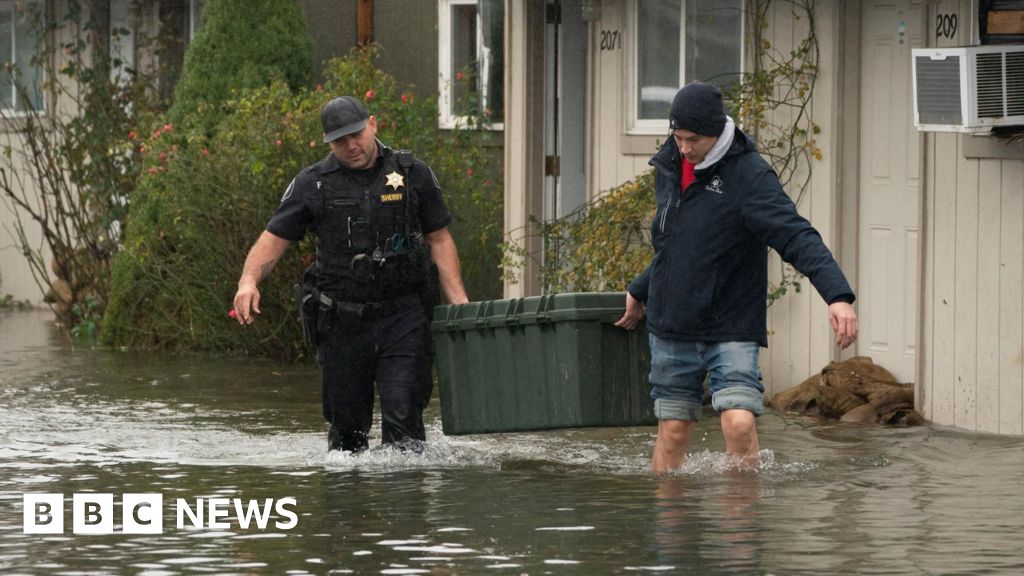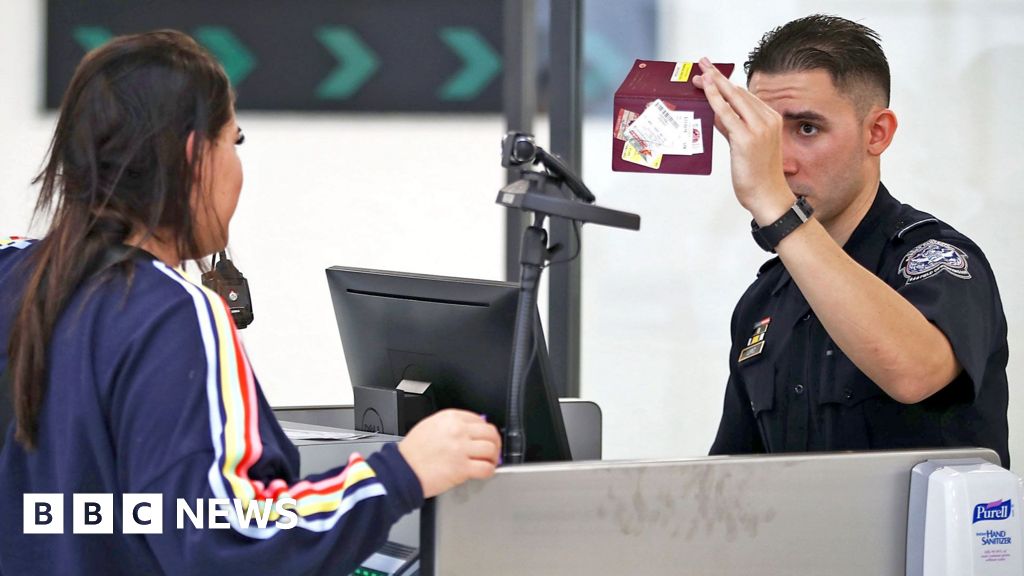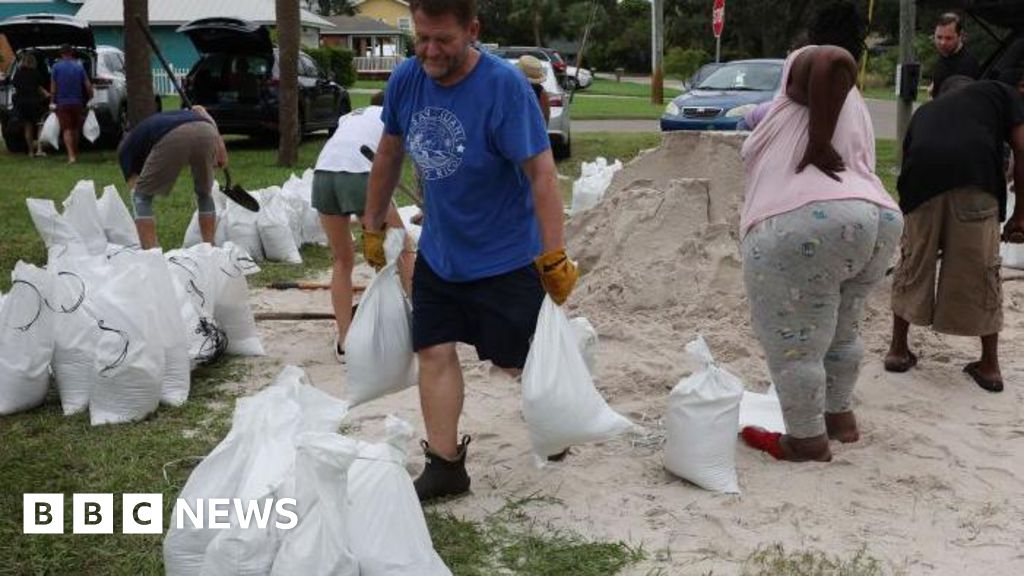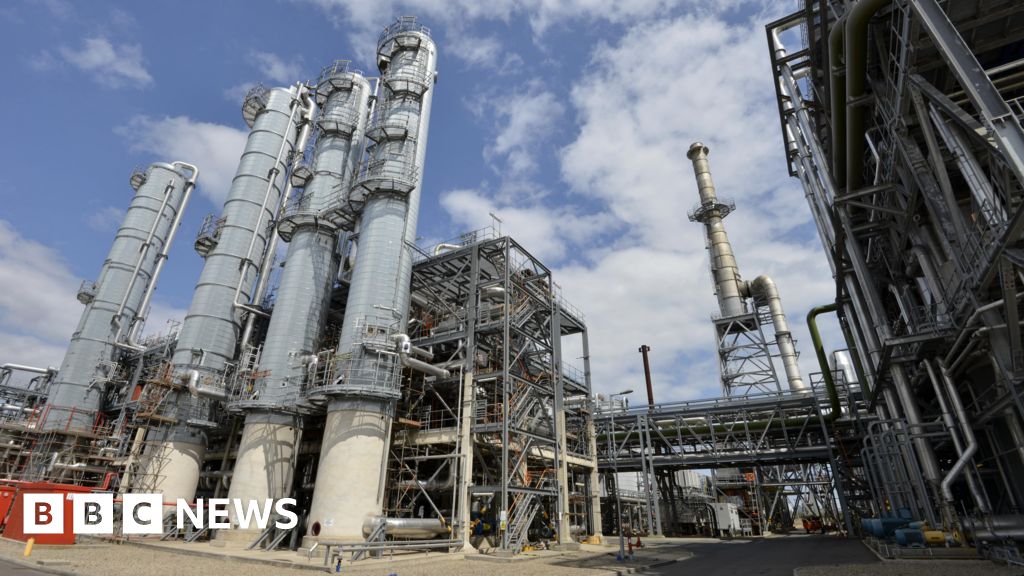Hurricane Milton has rapidly intensified into a category five storm as it tears its way towards the US Gulf Coast, the US National Hurricane Center (NHC) has said.
Ferocious winds of up to 175mph (281km/h) have been recorded as Milton heads towards Florida, where it is expected to make landfall on Wednesday night or early Thursday morning, the NHC said.
Floridians have been told to prepare for the state’s largest evacuation effort in years, with Governor Ron DeSantis warning that time for people to evacuate is quickly running out.
“We have to assume this is going to be a monster,” Governor DeSantis said at press conference on Monday afternoon.
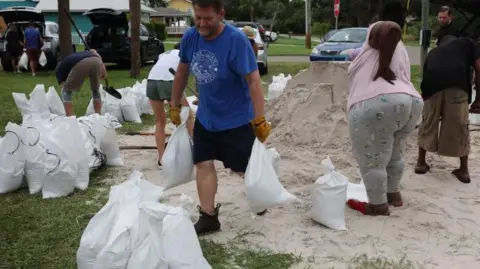 Getty Images
Getty ImagesWarnings over Hurricane Milton come just 10 days after Hurricane Helene – the deadliest mainland storm since Katrina in 2005 – pummeled the US south-east, killing at least 225 people. Hundreds more are missing.
At least 14 of those deaths were in Florida, where 51 of 67 counties are now under emergency warnings as Milton approaches.
“Unfortunately, some of the Helene victims are in the path of this storm,” DeSantis said.
“I would imagine that [Milton] would be more life threatening… as a result of the strength of this storm and where it may end up hitting.”
He urged residents to begin storm preparations and heed evacuation warnings early.
Ken Graham, director of the National Weather Service [NWS], said Milton became a category five hurricane at record-breaking speed – with wind speeds intensifying by 80 knots (148km/h) over 24 hours.
“That’s the third highest we have on record,” he said.
Hurricanes are separated into five categories based on their wind speed.
Those reaching category three and higher are considered major hurricanes because of their potential for significant loss of life and damage, according to the NWS.
Hurricane Milton is expected to weaken on Tuesday as it travels over the Gulf of Mexico, dropping to a category three storm by the time it makes landfall in Florida’s Tampa Bay on Wednesday evening or early on Thursday, CBS News, the BBC’s US news partner, reported.
Milton is then forecast to continue tracking north-east, cutting across the Florida peninsula as it heads for the Atlantic Ocean.
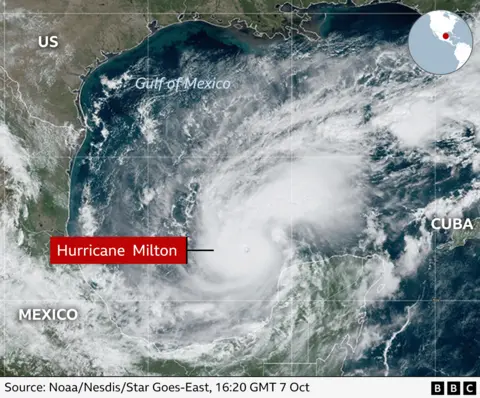
On Monday ahead of Milton’s landfall, long lines at petrol stations began forming in south Florida, with some reports of stations running out of fuel.
Traffic congestion in some areas has increased by as much as 90% above average, DeSantis said.
The state has opened additional lanes on some interstates to improve the flow of traffic.
School closures in several counties begin on Tuesday.
Keith Turi, a spokesperson for the Federal Emergency Management Agency (Fema), said: “I’m encouraged by the amount of evacuation that’s going on right now.”
“This is actually a good sign.”
The NHC warned torrential rain and flash-flooding can be expected across parts of Florida from Monday.
It added that life-threatening storm surges and damaging winds along portions of Florida’s west coast were possible from late Tuesday or early Wednesday.
Rainfall totals could reach localised highs of 15in (38cm), and coastal areas could see storm surges of of 5-10ft (1.5-3.5m).
DeSantis warned residents in the storm’s path, specifically in areas that have potential for storm surge, to leave as soon as possible.
“Time is going to start running out very, very soon,” he said.
Counties began issuing evacuation orders on Monday, and tolls will be suspended on roads in western and central Florida.
DeSantis also warned Floridians it is possible the storm will be powerful as it crosses the state.
“It’s going to remain a hurricane at some level all the way through exiting the east coast of Florida,” he said.
“This will produce major damage, whatever ends up happening,” he added.
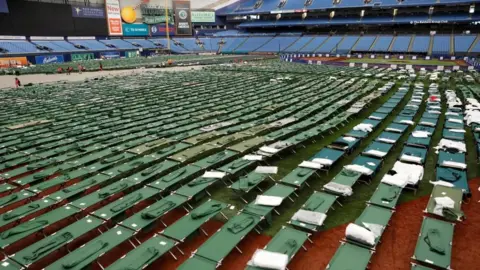 Reuters
ReutersParts of Pinellas County, where at least a dozen people were killed by Helene, were placed under evacuation orders on Monday.
Tampa International Airport announced it would be suspending flight operations from Tuesday because of the storm.
Where and when Milton is expected to hit
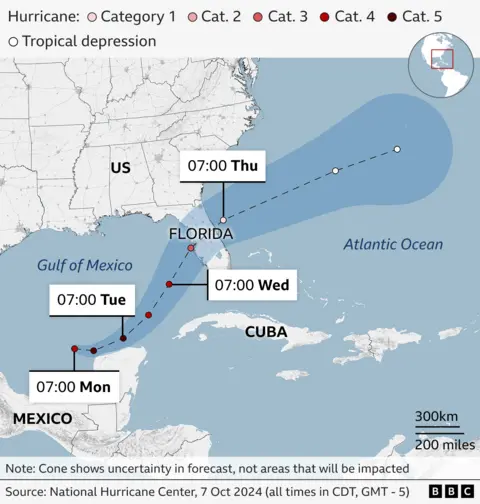
The approach of the new hurricane comes as the US government warns that clean-up efforts could take years after Hurricane Helene.
Over 12,000 cubic yards of debris have been removed in Helene-affected areas of Florida in less than two days, officials said.
DeSantis said debris removal will continue “until is is no longer safe to do so”.
Hundreds of roads in affected areas remain closed, hampering efforts to send aid to hard-hit communities.
Helene made landfall in late September as a category four hurricane – damaging structures, causing flash flooding and knocking out power to millions of homes.
As well as in Florida, deaths were recorded in Georgia, South Carolina, Tennessee and Virginia – and the worst-hit state, North Carolina.
President Joe Biden has ordered another 500 soldiers to be deployed to North Carolina. The troops – who now number 1,500 in all – will work with thousands of government relief workers and National Guard.
Biden has so far approved nearly $140m (£107m) in federal assistance. The use of the money has become the subject of false claims by Donald Trump, the Republican candidate for next month’s presidential election, who said relief money had been spent on migrants.
Trump has been accused of “dangerous” misinformation by the head of the US disaster relief agency.
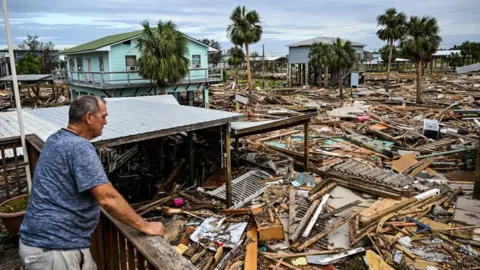 CHANDAN KHANNA/AFP
CHANDAN KHANNA/AFP

